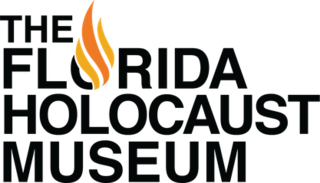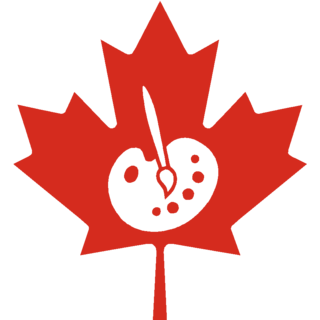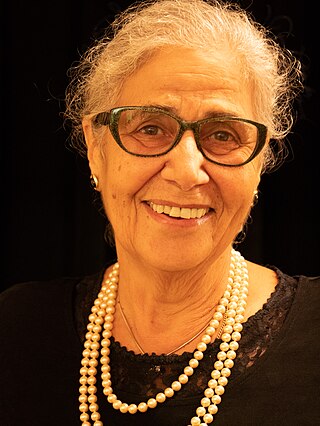A Jewish Community Center or a Jewish Community Centre (JCC) is a general recreational, social, and fraternal organization serving the Jewish community in a number of cities. JCCs promote Jewish culture and heritage through holiday celebrations, Israel-related programming, and other Jewish education. However, they are open to everyone in the community.

Squirrel Hill is a residential neighborhood in the East End of Pittsburgh, Pennsylvania, United States. The city officially divides it into two neighborhoods, Squirrel Hill North and Squirrel Hill South, but it is almost universally treated as a single neighborhood.

The Carnegie Museum of Art is an art museum in the Oakland neighborhood of Pittsburgh, Pennsylvania, United States. The museum was originally known as the Department of Fine Arts, Carnegie Institute and was formerly located at what is now the Main Branch of the Carnegie Library of Pittsburgh. The museum's first gallery was opened for public viewing on November 5, 1895. Over the years, the gallery vastly increased in size, with a new building on Forbes Avenue built in 1907. In 1963, the name was officially changed to Museum of Art, Carnegie Institute. The size of the gallery has tripled over time, and it was officially renamed in 1986 to "Carnegie Museum of Art" to indicate it clearly as one of the four Carnegie Museums.

The Florida Holocaust Museum is a Holocaust museum located at 55 Fifth Street South in St. Petersburg, Florida. Founded in 1992, it moved to its current location in 1998. Formerly known as the Holocaust Center, the museum officially changed to its current name in 1999. It is one of the largest Holocaust museums in the United States. It was founded by Walter and Edith Lobenberg both of whom were German Jews who escaped persecution in Nazi Germany by immigrating to the United States. Elie Wiesel, a Holocaust survivor and winner of the Nobel Peace Prize, was Honorary Chairman and cut the ribbon at the 1998 opening ceremony. The Florida Holocaust Museum is one of three Holocaust Museums that are accredited by the American Alliance of Museums. The museum works with the local community and survivors of the Holocaust to spread awareness and to educate the public on the history of the Holocaust.

Félix de la Concha is a painter. Born in León, Spain, he resides in Pittsburgh and Madrid.
The Jewish Community Center in Omaha, Nebraska was established in 1926, and moved to its present location at 333 South 132nd Street in 1973. The original JCC was the site of important labor organizing in the city, and has continued to serve as an important center for financial support in Omaha's Jewish community throughout its history. Today the JCC is the site of a Holocaust memorial that is unique in the Midwestern United States. In 2008 teams from the United States Olympic Trials practiced at the JCC before partaking in the official trials in downtown Omaha.
Koffler Arts is a broad-based cultural institution established in 1977 by Murray and Marvelle Koffler and based at Artscape Youngplace in the West Queen West area of downtown Toronto, Ontario.

The Miller ICA at Carnegie Mellon University is the contemporary art gallery of Carnegie Mellon University in Pittsburgh, Pennsylvania.

The Edlavitch Jewish Community Center of Washington, D.C. is an American Jewish Community Center located in the historic district of Dupont Circle. It serves the Washington, D.C. area through religious, cultural, educational, social, and sport center programs open to the public, although many programs are strongly linked to Jewish culture, both in the United States and in Israel. It is part of the JCC Association (JCCA), the umbrella organization for the Jewish Community Center movement, which includes more than 350 JCCs, YM-YWHAs, and camp sites in the U.S. and Canada, in addition to 180 local JCCs in the Former Soviet Union, 70 in Latin America, 50 in Europe, and close to 500 smaller centers in Israel.

Holocaust Memorial is a public artwork by American artist Claire Lieberman located on the Jewish Museum Milwaukee lawn, which is near downtown Milwaukee, Wisconsin, United States. It is located at 1360 North Prospect Ave. This piece is 10 ft x 24 ft x 20 ft. The materials used are Corten steel, black granite, and brick. The Holocaust Memorial was created in 1983.
Henry Koerner was an Austrian-born American painter and graphic designer best known for his early Magical Realist works of the late 1940s and his portrait covers for Time magazine.

The Oregon Jewish Museum and Center for Holocaust Education is the largest museum dedicated to the documented and visual history of the Jews of Oregon, United States. The Museum is dedicated to the preservation, research, and exhibition of art, archival materials, and artifacts of the Jews and Judaism in Oregon.

Jewish Painters of Montreal refers to a group of artists who depicted the social realism of Montreal during the 1930s and 1940s. First used by the media to describe participants of the annual YMHA-YWHA art exhibition, the term was popularized in the 1980s as the artists were exhibited collectively in public galleries across Canada. In 2009 the Musée national des beaux-arts du Québec mounted a touring exhibition Jewish Painters of Montreal: A Witness to Their Time, 1930–1948, which renewed interest in the group in Montreal, Toronto, and Vancouver.
Yona Verwer is a Dutch-born visual artist, living in New York City.
Samuel Rosenberg (1896–1972) was an American artist and Professor at Carnegie Mellon University in Pittsburgh, PA. He showed his work at the Museum of Modern Art, the Whitney Museum in New York, the National Academy of Art in Washington, the Corcoran Gallery, and in the Pennsylvania Academy of Fine Arts. He was a beloved art teacher, and some of his students were Mel Bochner, Philip Pearlstein and Andy Warhol.
Brett Yasko is an American graphic designer. He has designed books, gallery guides, catalogues and exhibitions for numerous artists and institutions.
Smadar Sheffi is an art critic, researcher of art and culture, and a curator of contemporary art. She is the founder of the Contemporary Art Center, Ramle – CACR and was the Chief Curator. Over past years, she has gained vast experience in curating exhibitions in historical structures, among them the Bialik House Museum in Tel Aviv, Jerusalem Artists House, Contemporary Art Center, Ramla - CACR, and the Pool of Arches, Ramla. Dr. Sheffi’s bilingual blog of art criticism and notes on contemporary culture, The Window, has been active since 2012.

The Museum of the Southern Jewish Experience, or MSJE, is a private, non-profit museum in New Orleans, Louisiana. The museum explores the many ways that Jews in the American South influenced and were influenced by the distinct cultural heritage of their communities. Through exhibits, collections, and programs focused on the history of Southern Jews, the museum encourages new understanding and appreciation for identity, diversity, and acceptance.

Jacqueline Semha Nataf Gmach is a Tunisian-born, Sorbonne-trained American educator. Her work focuses on Jewish culture, Sephardic history, and preserving the artistic achievements of people victimized by the Holocaust.
Charlee Mae Brodsky is an American fine art documentary photographer and emeritus professor of photography at Carnegie Mellon University. Her work often explores themes of social issues and beauty. She has received a Regional Emmy Award and the title of Pittsburgh's Artist of the Year in 2012.











